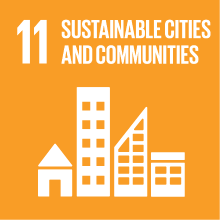PHOENICIAN-PUNIC ARCHAEOLOGY
- Academic year
- 2025/2026 Syllabus of previous years
- Official course title
- ARCHEOLOGIA FENICIO-PUNICA
- Course code
- FT0455 (AF:591244 AR:325849)
- Modality
- Blended (on campus and online classes)
- ECTS credits
- 6
- Degree level
- Bachelor's Degree Programme
- Educational sector code
- L-OR/06
- Period
- 1st Term
- Course year
- 3
- Where
- VENEZIA
Contribution of the course to the overall degree programme goals
Through a comprehensive examination of archaeological evidence, historical sources, and modern research methods, you will delve into the rich tapestry of Phoenician society, economy, religion, and politics.
This class is part of the archaeological curriculum of the BA degree in Conservation and Management of Cultural Heritage as well as part of the "ancient mediterranean" curriculum of the BA degree in History. Students from other BAs are equally welcome.
The course is organized in two parts of 30 hours each. If you are enrolled in the archaeological curriculum of the Cultural Heritage BA, you can follow both parts and sustain a 12-CFU exam. Otherwise, you can follow the first part only ("Phoenician-Punic Archaeology I") as a 6-CFU exam. If you are a foreign student, please contact the teacher for further information.
Expected learning outcomes
Here are some of the key learning outcomes you can expect from this course:
Knowledge and Understanding:
- Gain an understanding of the geography of the Levant and the Mediterranean, crucial for contextualizing Phoenician civilization.
- Explore the chronological framework of the ancient Levant, unraveling the timeline of significant events and developments.
- Familiarize yourself with diverse sources and methodologies employed in the archaeology of the ancient Levant and the Phoenician world.
Application of Knowledge and Understanding:
- Develop the ability to pinpoint ancient cities and prominent geographic features on maps, enhancing spatial awareness.
- Acquire the skill to make informed estimations regarding the dating of emblematic Levantine and/or Phoenician artifacts.
- Master the art of designing simple research strategies tailored to address specific topics discussed in class.
Making Judgements:
- Formulate your own interpretative hypotheses for the various classes of artifacts and sources analyzed in class, fostering critical thinking.
- Cultivate the capacity to construct independent critical opinions on the textbooks and articles examined during the course.
Communication:
- Learn effective collaboration within groups to tackle archaeological challenges, fostering teamwork and problem-solving abilities.
- Hone your public speaking skills, practicing the art of conveying information and ideas confidently and appropriately to an audience.
Lifelong Learning Skills:
- Develop the ability to swiftly extract essential information from scientific articles, honing your efficiency in academic research.
- Cultivate the proficiency to engage with texts written in languages other than your native tongue, broadening your academic horizons and adaptability.
Pre-requirements
Contents
The first part, corresponding to the lectures of the first period, introduces the Archaeology of the ancient Eastern Mediterranean, with particular attention to Phoenician cities in the early Iron Age (c. 1200 - 900 BC).
Here are some of the topics that will be discussed in class during the first part of the course:
- Phoenician-Punic Archaeology in the context of post-colonial studies
- The fundamental characteristics of the Mediterranean Sea in Antiquity
- Economic resources and trade systems
- Art and architecture of Levantine cities
- Funerary practices and the cult of the dead
The second part, corresponding to the lectures of the second period, resumes and delves deeper into issues of maritime archaeology and coastal archaeology, with particular attention to the Phoenician presence in the central and western Mediterranean from the 9th century BC until the destruction of Carthage in 146 BC.
Referral texts
Part I (Phoenician-Punic Archaeology I):
- H. Sader, "The History and Archaeology of Phoenicia" (Atlanta 2019)
Part II (Phoenician-Punic Archaeology II):
- G. Markoe, The Phoenicians. London: British Museum Press 2000.
Assessment methods
Type of exam
Grading scale
Sufficient
18: The minimum required level of competence has been achieved.
19: Basic understanding of fundamental concepts.
Fair
20: Decent knowledge of the main topics, with significant areas for improvement.
21: Fair understanding of the main topics, with some areas for improvement.
22: General fair understanding with the ability to apply concepts independently.
Good
23: Solid grasp of the covered topics.
24: Strong understanding with independent critical analysis skills.
25: Solid mastery, independent critical analysis, and confident application of complex concepts.
Very Good
26: Very good command of the topics, with deep understanding.
27: Excellent skills, advanced critical thinking.
28: Outstanding comprehension, critical ability, and remarkable synthesis skills.
Excellent
29: Demonstrates excellent skills and a thorough understanding.
30: Has achieved a level of excellence with superior mastery and exceptional analytical skills.
Teaching methods
In particular, the course consistently employs:
- Directed readings
- Visual thinking strategies
- Critical Making
Additionally, participants will contribute to creating a glossary on Moodle, which will gradually expand with technical and specialized terms helpful in learning how to describe and identify key elements of Phoenician-Punic archaeology accurately.
Go to the Moodle Course Homepage for more details.
Teaching language
Further information
2030 Agenda for Sustainable Development Goals
This subject deals with topics related to the macro-area "Cities, infrastructure and social capital" and contributes to the achievement of one or more goals of U. N. Agenda for Sustainable Development


